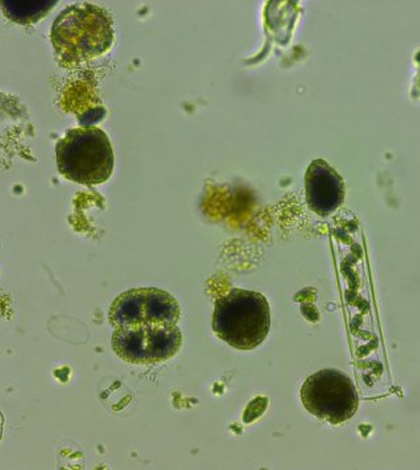Global Warming May Cause Higher Phytoplankton Diversity

Phytoplankton diversity and photosynthesis have been boosted by warmer temperatures. (Credit: Gabriel Yvon-Durocher)
While some species experience stress or reductions in numbers due to higher temperatures, phytoplankton seem to experience enhanced biodiversity, potentially boosting their ability to survive and thrive in warmer temperatures, according to a release from the University of Exeter. Not only do phytoplankton show evidence of higher biodiversity at increased temperatures, they also seem to experience enhanced photosynthesis, further increasing their ability to utilize carbon dioxide, researchers have found.
Phytoplankton were identified, counted and measured via microscope. Oxygen production or consumption was measured to determine respiration and photosynthesis rates. Conducting their testing in outdoor mesocosms, U. of Exeter scientists found that those warmed by 4 degrees produced phytoplankton populations with 70 percent more species and higher photosynthesis rates than populations from cooler mesocosms, making phytoplankton even better at removing carbon dioxide than before.
Phytoplankton remove as much carbon dioxide from the atmosphere as tropical rainforests, and raising the temperature would simply allow them to utilize an even larger amount of carbon dioxide, researchers note. Scientists also observed that the evenness of phytoplankton species dispersion was partly due to the grazing habits of zooplankton, whose broad consumption preferences prevented phytoplankton species from dominating.
Top image: Phytoplankton diversity and photosynthesis have been boosted by warmer temperatures. (Credit: Gabriel Yvon-Durocher)




0 comments